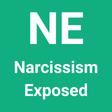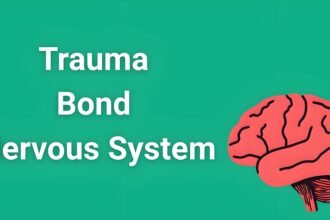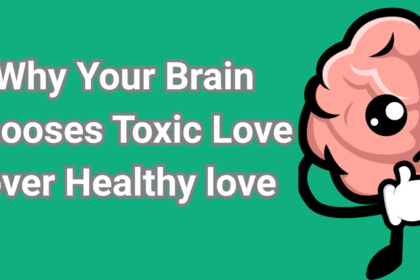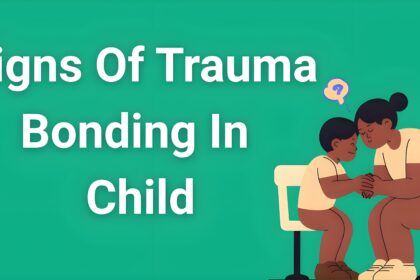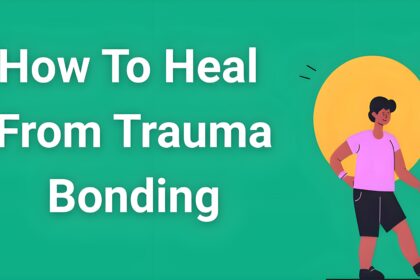Have you ever felt like something was missing, but you couldn't quite name it? Like an invisible wall stands between you and your feelings, or a subtle emptiness follows you through life? You're not alone – these are often the whispers of childhood emotional neglect echoing through your adult life.
- What is Childhood Emotional Neglect?
- Silent Signs You Experienced Childhood Emotional Neglect
- The Adult Impact of Childhood Emotional Neglect
- Understanding Your Emotional Blueprint
- Healing from Childhood Emotional Neglect Through Practical Steps
- Creating Your Emotional Legacy After Childhood Emotional Neglect
- Last words
Childhood emotional neglect (CEN) occurs when your caregivers failed to respond adequately to your emotional needs during your formative years. Unlike physical neglect or emotional abuse, CEN is remarkably subtle – it's not about what happened to you, but what didn't happen. It's the emotions that went unacknowledged, the feelings that were dismissed, and the emotional connection that was missing.
Think of it like growing up in a house where the emotional thermostat was broken. On the surface, everything might have looked fine – you had food, shelter, maybe even material comfort. But the emotional temperature was always a bit too cold, leaving you without the tools to understand, express, or cope with your feelings. This early emotional climate doesn't just fade away with time; it shapes how you navigate your adult world.
You might recognize this if you:
- Often feel like you're “going through the motions” in life
- Struggle to identify what you're feeling in any given moment
- Find yourself wondering if there's something fundamentally wrong with you
- Have a persistent sense that you're different from everyone else
Understanding childhood emotional neglect is like finding the missing piece of a puzzle you didn't even know you were solving. It explains why seemingly successful adults might feel disconnected from their emotions, struggle with self-doubt, or find themselves constantly seeking validation from others.
As we explore deeper into how emotional neglect in childhood influences your adult life, you'll discover that these patterns aren't your fault – and more importantly, they can be changed. Your past may have shaped you, but it doesn't have to define your future.
What is Childhood Emotional Neglect?
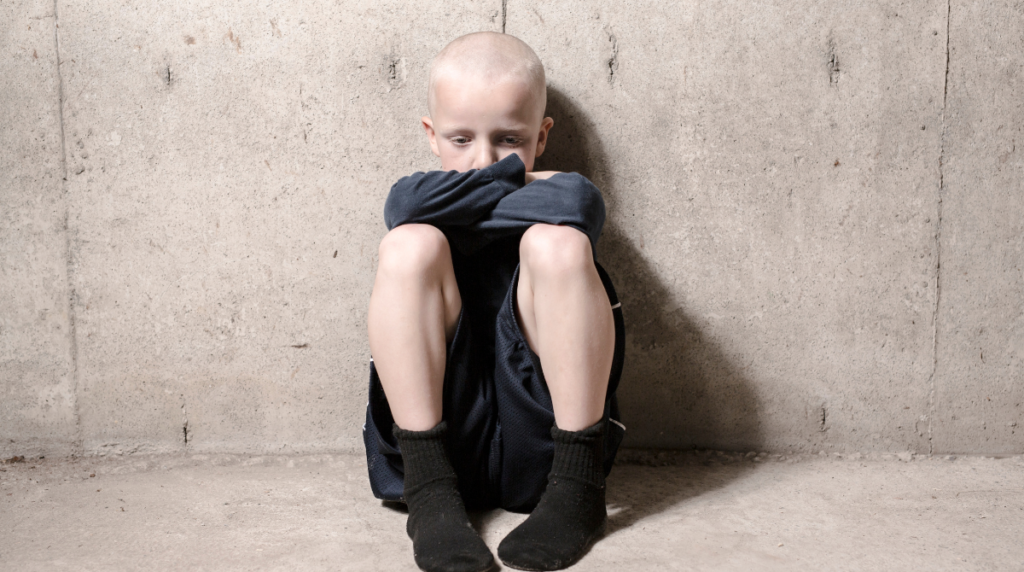
Childhood emotional neglect (CEN) is more than just a parenting oversight – it's a pattern of emotional unavailability that leaves lasting imprints on your development. At its core, CEN occurs when your caregivers consistently fail to notice, respond to, or validate your emotional needs during your formative years. This creates an environment where your feelings become invisible, both to others and, eventually, to yourself.
How Emotional Neglect Differs from Other Childhood Experiences
Unlike physical abuse or active emotional abuse, childhood emotional neglect is characterized by what's missing rather than what's present. While other forms of childhood trauma might leave visible bruises or clear memories of harmful events, emotional neglect is like a blank space in your emotional photo album – it's the comfort that wasn't given, the feelings that weren't acknowledged, and the emotional connection that never formed.
Think about these common scenarios where emotional neglect often occurs:
- Parents who focus solely on academic or athletic achievement while ignoring emotional development
- Families where “being strong” means never showing feelings
- Households where parents are physically present but emotionally disconnected
- Situations where children's emotional reactions are consistently dismissed or minimized
- Families coping with chronic illness, where all attention goes to physical needs
The Unintentional Pattern of Emotional Neglect
Here's what makes childhood emotional neglect particularly complex: it's often unintentional. Many parents who emotionally neglect their children are themselves survivors of emotional neglect, creating an unconscious generational pattern. They might provide excellent physical care while being emotionally unavailable simply because they never learned how to respond to emotions themselves.
Your parents might have:
- Believed that not acknowledging negative emotions would make them go away
- Focused on practical solutions while missing emotional needs
- Been overwhelmed by their own struggles
- Never learned how to process or express emotions healthily
- Viewed emotions as signs of weakness or vulnerability
Understanding the nature of childhood emotional neglect helps explain why many adults struggle with emotional awareness and self-validation. When your emotional needs weren't met in childhood, you might have learned to suppress or ignore your feelings as a survival mechanism – a pattern that often continues into adulthood.
The impact of emotional neglect in childhood extends far beyond your early years, influencing everything from how you form relationships to how you parent your own children. But recognizing these patterns is the first step toward healing and developing a healthier emotional life.
Silent Signs You Experienced Childhood Emotional Neglect
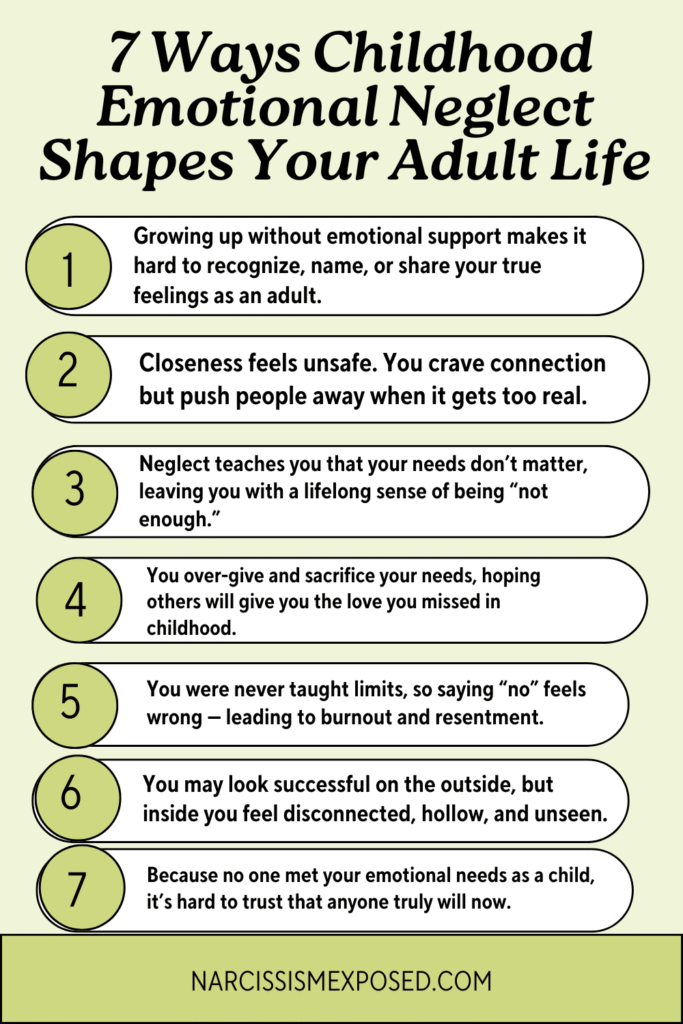
Have you ever wondered why certain emotional patterns keep repeating in your life? The effects of childhood emotional neglect often lurk beneath the surface, shaping your daily experiences in subtle yet profound ways. Let's explore the signs that might indicate you experienced emotional neglect in your childhood years.
You Feel Disconnected from Your Emotions
You often find yourself:
- Struggling to name what you're feeling beyond “good” or “bad”
- Watching others express emotions with ease while you feel frozen
- Having difficulty identifying your needs and wants
- Feeling “blank” when asked about your feelings
- Wondering if you're broken because emotions don't come naturally
You Battle Persistent Self-Doubt
The impact of childhood emotional neglect shows up in your self-image when:
- You question every decision, even after making it
- Your inner critic constantly whispers “not good enough”
- You dismiss your achievements as luck or coincidence
- Your self-worth seems to depend entirely on others' approval
- You struggle to trust your own judgment
You're the Ultimate People-Pleaser
Signs of emotional neglect appear in your relationships when:
- You say “yes” when you desperately want to say “no”
- Your needs always take a backseat to others' wants
- You feel responsible for everyone else's feelings
- The thought of disappointing others causes intense anxiety
- You're constantly anticipating others' needs while ignoring your own
You Feel Like an Outsider
Childhood emotional neglect can make you feel different because:
- You watch others connect easily while feeling like you're behind a glass wall
- Social situations leave you feeling drained and uncomfortable
- You're convinced something is fundamentally wrong with you
- You often feel like you're faking your way through social interactions
- Deep connections seem impossible to form
You Struggle with Self-Discipline
The effects of emotional neglect show up in your daily habits when:
- You find it hard to stick to routines
- Self-care feels like an impossible challenge
- Procrastination becomes your default mode
- You can't seem to motivate yourself
- Setting and achieving personal goals feels overwhelming
You Experience Emotional Numbness
The most profound impact of childhood emotional neglect might be:
- Feeling empty or hollow inside
- Going through life on autopilot
- Experiencing success without satisfaction
- Finding it hard to get excited about anything
- Feeling disconnected from your own life story
Understanding these signs of childhood emotional neglect is crucial because awareness is the first step toward healing. These patterns aren't character flaws – they're adaptations your young self created to cope with an emotionally neglectful environment. Recognizing them now opens the door to developing healthier emotional patterns.
Remember, experiencing these signs doesn't mean you're broken or permanently damaged. They're signals pointing to emotional needs that weren't met in your childhood, and with understanding and support, you can begin to meet those needs now.
The Adult Impact of Childhood Emotional Neglect
When childhood emotional neglect follows you into adulthood, its effects ripple through every aspect of your life. Understanding these impacts can help you recognize why certain patterns keep emerging and, more importantly, how to begin changing them.
Your Relationship Patterns
The legacy of childhood emotional neglect often shows up most clearly in your relationships:
- You maintain emotional distance even in close relationships
- Intimacy feels simultaneously desired and threatening
- You struggle to express needs or set boundaries with loved ones
- Trust issues make it hard to fully commit or feel secure
- You often feel unworthy of love or genuine connection
Your Career Journey
Childhood emotional neglect can significantly influence your professional life:
- You might be a high achiever driven by an endless need to prove your worth
- Or you may underperform despite having significant potential
- Imposter syndrome feels like a constant companion
- You struggle to advocate for yourself at work
- Networking and professional relationships feel inauthentic
- Success brings little satisfaction or sense of accomplishment
Your Parenting Experience
If you're a parent, the effects of emotional neglect in childhood might surface as:
- Fear of repeating patterns from your own childhood
- Difficulty identifying your children's emotional needs
- Overcompensating by trying to be the “perfect” parent
- Feeling triggered by your children's emotional expressions
- Uncertainty about appropriate emotional responses
- Struggling to create the emotional connection you never had
Your Mental Health
The psychological impact of childhood emotional neglect often manifests as:
- Persistent anxiety about relationships and performance
- Depression that comes from feeling chronically empty or disconnected
- Difficulty regulating emotions when they do surface
- Complex feelings of shame and unworthiness
- Tendency toward perfectionism and control
- Struggle with identity and sense of self
Your Physical Well-being
Research shows that childhood emotional neglect can affect your physical health through:
- Chronic stress responses in your body
- Difficulty maintaining consistent self-care routines
- Increased risk of autoimmune conditions
- Sleep disturbances and fatigue
- Tension-related pain and headaches
- Digestive issues linked to emotional stress
Your Self-Care Patterns
The impact on your relationship with yourself often shows up as:
- Difficulty prioritizing your own needs
- Inconsistent self-care routines
- Feeling guilty when doing things just for yourself
- Struggling to identify what makes you feel good
- Neglecting basic needs like rest, nutrition, or exercise
- Having trouble asking for help when you need it
Understanding these impacts of childhood emotional neglect doesn't mean you're destined to struggle forever. Each realization about how early emotional neglect has shaped your adult life is an opportunity for healing and change. By recognizing these patterns, you can begin to:
- Develop more nurturing relationships with yourself and others
- Create healthier boundaries in all areas of life
- Learn to identify and express your needs
- Build a stronger sense of self-worth
- Practice consistent self-care without guilt
- Break the cycle of emotional neglect
Remember, while childhood emotional neglect may have shaped your past and present, it doesn't have to determine your future. Awareness of these impacts is the first step toward creating meaningful change in your life.
Understanding Your Emotional Blueprint
Growing up with childhood emotional neglect creates a unique emotional blueprint that influences how you process feelings, handle stress, and navigate relationships. Think of it as an invisible operating system running in the background of your adult life – one that was programmed during your earliest years.
Your Emotional Processing System
When childhood emotional neglect is part of your story, your emotional processing often works differently:
- You might automatically suppress emotions before fully experiencing them
- Strong feelings can feel overwhelming or dangerous
- You've developed a habit of rationalizing instead of feeling
- Your emotional vocabulary might be limited
- You often feel numb when others expect you to feel something
Your Stress Response Patterns
Emotional neglect in childhood rewires your stress response system:
- Your fight-flight-freeze response activates more easily
- Small stressors can trigger disproportionate reactions
- You might default to “shutting down” under pressure
- Difficulty self-soothing during stressful situations
- Your body stays in high alert even in safe situations
Your Decision-Making Framework
The impact of early emotional neglect shows up in how you make choices:
- You struggle to trust your gut instincts
- Decision paralysis is a common experience
- You often seek excessive external validation
- Fear of making wrong choices leads to procrastination
- You have difficulty identifying what you truly want
Your Boundary Blueprint
Childhood emotional neglect significantly affects how you establish and maintain boundaries:
- You might swing between having no boundaries and rigid walls
- Saying “no” triggers intense guilt or anxiety
- You struggle to recognize when others cross your boundaries
- Setting limits feels selfish or unnecessary
- You often override your own boundaries to please others
Your Relationship Template
In intimate relationships, the effects of emotional neglect become particularly visible:
- You maintain emotional distance even while craving connection
- Vulnerability feels terrifying rather than connecting
- You struggle to express needs or desires to partners
- Emotional intimacy triggers anxiety or withdrawal
- You might choose partners who reinforce emotional neglect patterns
Understanding Your Programming
Recognizing how childhood emotional neglect has shaped your emotional blueprint is crucial because:
- It explains why certain patterns keep repeating
- You can identify triggers before they overwhelm you
- It helps you develop more self-compassion
- You can begin consciously creating new patterns
- Understanding leads to more effective healing strategies
The good news is that while childhood emotional neglect may have created your original emotional blueprint, you can revise and update it. Through conscious awareness and consistent practice, you can:
- Develop healthier emotional processing skills
- Create more balanced stress responses
- Trust your decision-making abilities
- Establish and maintain appropriate boundaries
- Build more fulfilling relationships
Remember, your emotional blueprint isn't your destiny – it's simply your starting point. With understanding and support, you can reshape these patterns into a healthier emotional foundation.
Healing from Childhood Emotional Neglect Through Practical Steps
Unlike generic advice about “loving yourself” or “letting go,” healing from childhood emotional neglect requires specific, actionable steps. Let's explore concrete strategies that address the unique challenges of emotional neglect recovery.
Recognizing Your Emotional Needs
Instead of telling you to “get in touch with your feelings,” try these concrete practices:
- Keep an emotion wheel nearby and check it 3 times daily
- Set hourly phone reminders to pause and name one feeling
- Write down physical sensations when emotions arise
- Track your energy levels after different social interactions
- Record situations that make you feel either drained or energized
Building Emotional Awareness
Rather than just “being more mindful,” implement these specific techniques:
- Start with basic emotions (mad, sad, glad, scared) and rate their intensity from 1-10
- Create a daily “emotion timestamp” where you document your feelings at specific times
- Use voice recordings to describe emotional experiences immediately after they happen
- Practice identifying emotions in others through movies with the sound off
- Keep a “body map” journal where you color code where you feel different emotions
Developing Real Self-Compassion
Instead of vague suggestions to “be kind to yourself,” try these measurable actions:
- Write down three specific situations where emotional neglect affected your choices
- Record yourself speaking kindly about a mistake, then play it back daily
- Create a “younger self” photo album and spend 5 minutes daily talking to your child self
- List exact phrases your inner critic uses, then write counter-statements
- Practice self-soothing techniques with timers (2 minutes of deep breathing, 5 minutes of gentle movement)
Creating Authentic Relationships
Rather than “putting yourself out there,” focus on these specific relationship-building steps:
- Share one small emotional experience daily with a trusted person
- Practice naming needs out loud when alone before expressing them to others
- Set weekly “connection appointments” with specific goals for emotional sharing
- Use “I notice…” statements to practice emotional observations in conversations
- Create a relationship inventory tracking emotional safety with different people
Establishing Functional Boundaries
Instead of simply “setting boundaries,” implement this systematic approach:
- Create a three-column list: “Always OK,” “Sometimes OK with conditions,” and “Never OK”
- Practice specific boundary statements in the mirror for 5 minutes daily
- Role-play boundary scenarios with a therapist or trusted friend
- Document boundary violations and your responses to build awareness
- Develop a “boundary script” for common situations
Working with Professional Support
Rather than just “finding a therapist,” take these specific steps:
- Look for therapists specifically trained in childhood emotional neglect and trauma
- Interview potential therapists with these specific questions about their experience with CEN
- Set measurable therapy goals related to emotional awareness and connection
- Keep a therapy journal tracking specific insights and changes
- Schedule regular progress reviews to assess healing milestones
Measuring Your Progress
Track your healing journey with these concrete markers:
- Note how long you can stay with uncomfortable emotions (time it)
- Count the number of times you can name your needs in a day
- Track instances of boundary-setting and their outcomes
- Record moments of emotional connection, however small
- Document changes in physical symptoms related to emotional stress
Remember, healing from childhood emotional neglect isn't about vague self-improvement – it's about specific, measurable changes in how you relate to yourself and others. Each small step builds your emotional capacity and rewires your response patterns.
Creating Your Emotional Legacy After Childhood Emotional Neglect
Breaking free from childhood emotional neglect isn't just about healing yourself – it's about transforming the emotional patterns that could affect future generations. Let's explore how you can create a new emotional legacy.
Breaking Generational Patterns
Moving beyond the impact of emotional neglect means actively choosing different paths:
- Map your family's emotional patterns across three generations
- Identify specific trigger moments where old patterns emerge
- Create new responses to emotional situations that challenged your parents
- Practice emotional presence even when it feels uncomfortable
- Document your journey to share with future generations
Building Real Emotional Intelligence
Transform your relationship with emotions through concrete practices:
- Develop an emotional vocabulary that goes beyond “fine” or “okay”
- Practice expressing emotions in safe spaces before high-stakes situations
- Learn to distinguish between primary emotions and reactive feelings
- Create emotional safety plans for overwhelming situations
- Build a toolkit of healthy emotional regulation strategies
Creating Nurturing Environments
Design spaces and relationships that support emotional health:
- Establish daily emotional check-in routines
- Create physical spaces that encourage emotional expression
- Build relationships that validate rather than dismiss feelings
- Foster open dialogue about emotional experiences
- Maintain boundaries that protect emotional safety
Developing True Resilience
Build emotional strength through consistent practice:
- Face difficult emotions in small, manageable doses
- Develop specific coping strategies for different emotional challenges
- Create support networks that understand emotional neglect recovery
- Practice emotional agility in varying situations
- Learn to trust your emotional responses
Setting New Standards
Establish healthy emotional baselines:
- Define what emotional health looks like for you
- Create clear markers for emotional wellness
- Establish personal non-negotiables in relationships
- Set boundaries that honor your emotional needs
- Build traditions that celebrate emotional authenticity
Last words
The impact of childhood emotional neglect runs deep, but it doesn't have to define your future. Through this exploration, you've discovered:
- How emotional neglect shaped your early experiences
- The ways it influences your adult relationships and decisions
- Specific patterns that keep you stuck
- Practical tools for healing and growth
- Steps to create a new emotional legacy
Your journey of healing from childhood emotional neglect is uniquely yours. While the path isn't always linear, each step forward – no matter how small – matters. You're not just healing yourself; you're creating ripples of change that can transform generations to come.
Remember: The emotional awareness you're developing now is revolutionizing your relationship with yourself and others. You're not just surviving emotional neglect; you're learning to thrive despite it.
Take the next step: Whether it's implementing one new emotional awareness practice, setting a single boundary, or reaching out for support, you're capable of creating meaningful change. Your future self will thank you for starting today.
Subscribe newsletter to get directly blog post into your mailbox.
